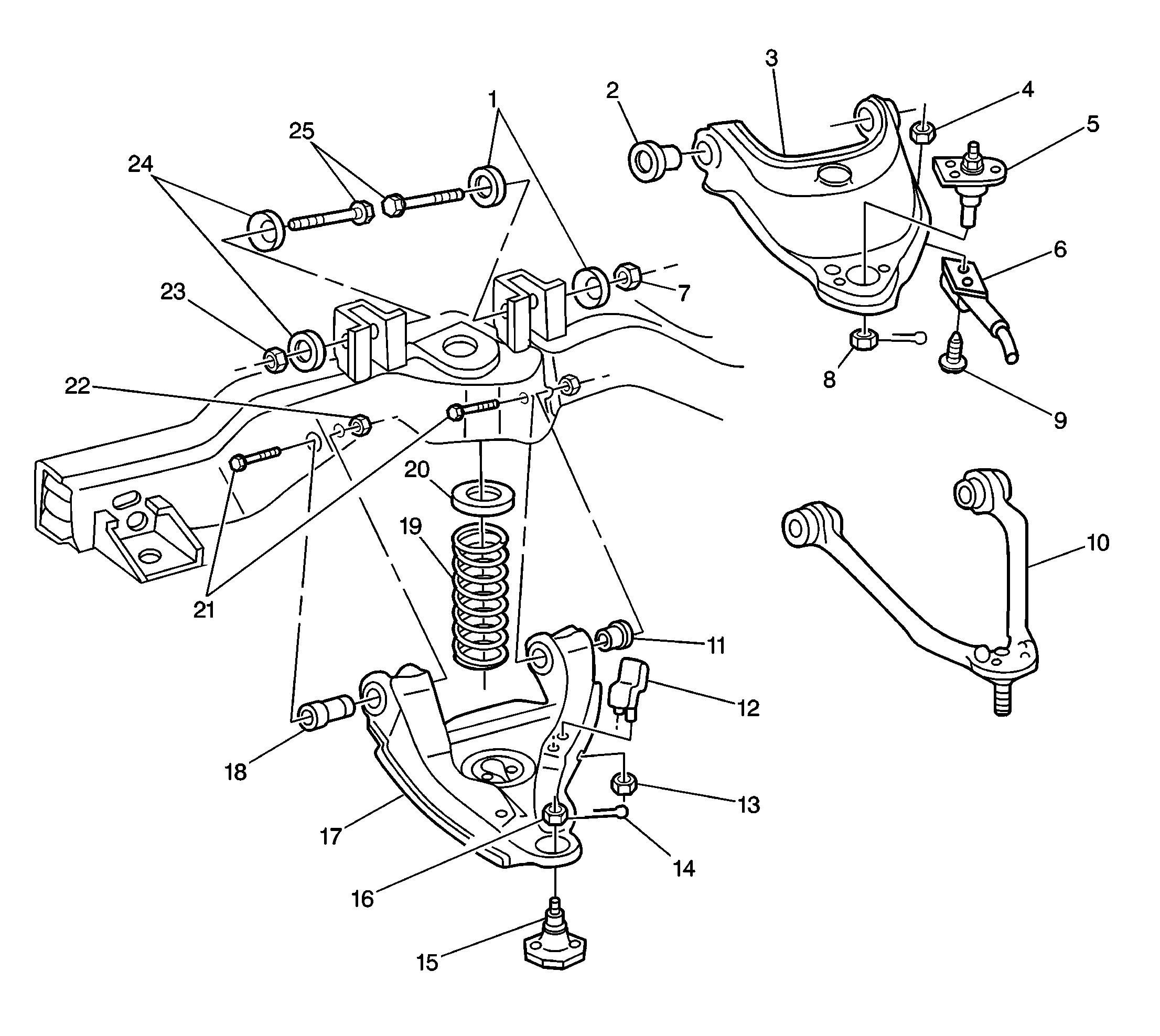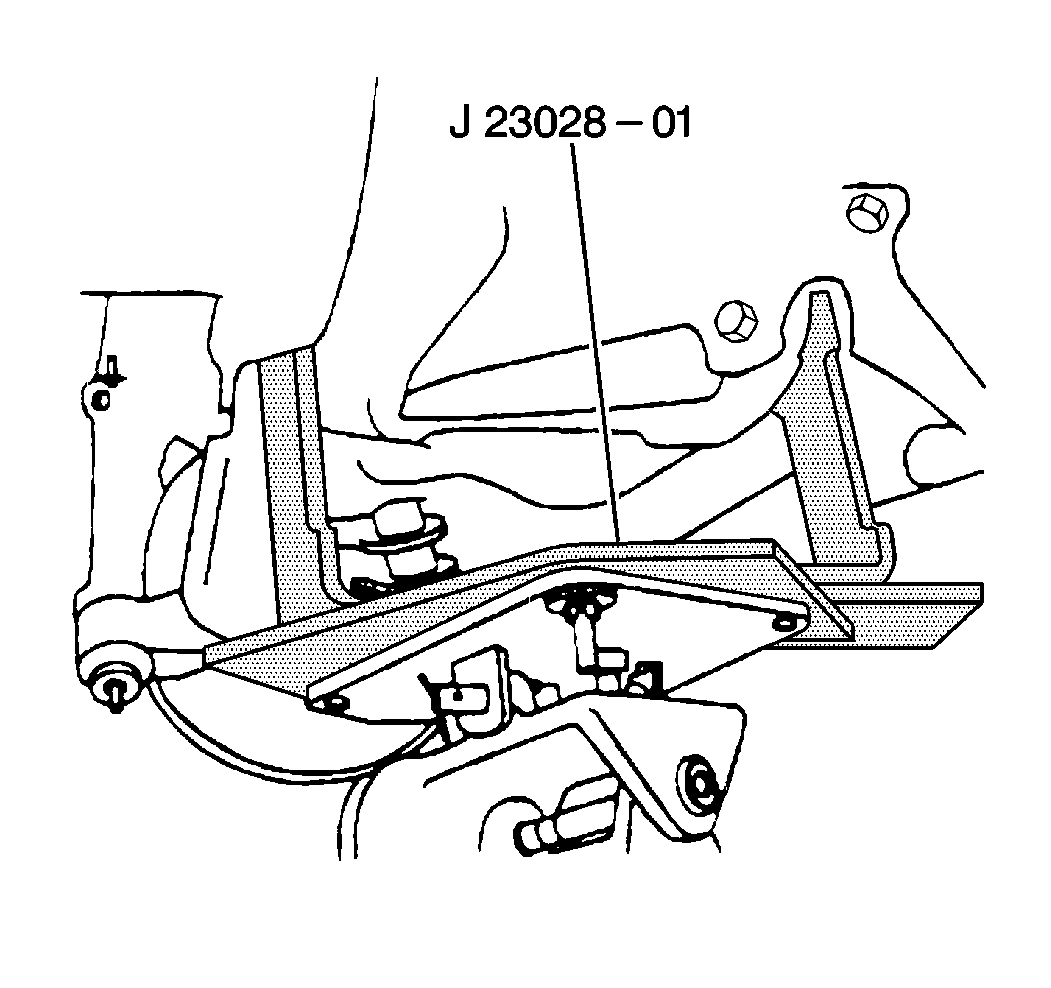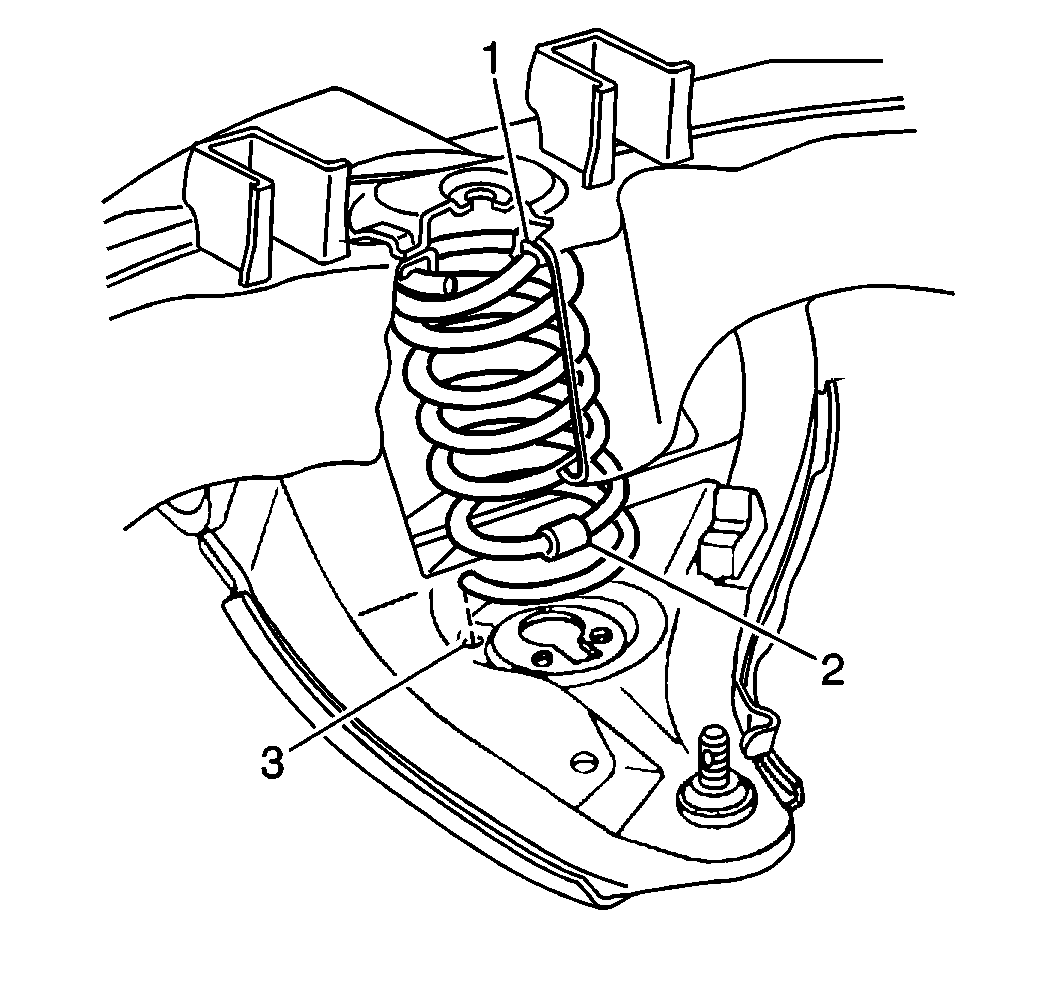Removal Procedure
For control arms and components, refer to
Control Arm and Components (2WD)

Tools Required
J 23028-A Coil Spring
Remover and Installer
- Raise the vehicle on a hoist so that the control arms hang free.
- Remove the tire and wheel assembly. Refer to
Tire and Wheel Removal and Installation
in Tires and Wheels.
- Remove the shock absorber. Refer to
Shock Absorber Replacement
.

- Cradle the lower control
arm. Use the J 23028-A
,
secured to the end of a suitable jack.
- Remove the stabilizer shaft from the lower control arm. Refer
to
Stabilizer Shaft Replacement
.
| 5.1. | Raise the jack in order to relieve tension on the lower control
arm pivot bolts. |
| 5.2. | Secure the spring with a chain through the spring and the control
arm. |
- Remove the pivot bolts and nuts.
| 6.1. | Take the rear pivot bolt out first. |
| 6.2. | Lower the control arm by lowering the jack. |
| 6.3. | When compression is removed from the coil spring, take the chain
away. |
- Remove the coil spring and the insulator.
- Position the coil spring properly for easy removal.
Installation Procedure

- Install the coil spring
and the insulator on the lower control arm.
| • | The coil spring is installed with the tape at the lowest position,
and a gripper notch at the top (2). |
| • | Inspection drain holes (3). One hole must be covered by the end
of the spring, and one hole must be open. |
| • | Secure the spring with a chain through spring and the control
arm. |
| • | Make sure the spring insulator (1) is on top. |

- Support the control arm
using the J 23028-A
.
- Install the lower control arm in place on the frame. Guide the
control arm into place with a pry bar.

Notice: Use the correct fastener in the correct location. Replacement fasteners
must be the correct part number for that application. Fasteners requiring
replacement or fasteners requiring the use of thread locking compound or sealant
are identified in the service procedure. Do not use paints, lubricants, or
corrosion inhibitors on fasteners or fastener joint surfaces unless specified.
These coatings affect fastener torque and joint clamping force and may damage
the fastener. Use the correct tightening sequence and specifications when
installing fasteners in order to avoid damage to parts and systems.
Important: The pivot bolts must be installed in the proper direction.
The nuts must be tightened with the control arm at Z height. Refer to
Trim Height Inspection
in Suspension General Diagnosis.
The front nut must be tightened before the rear nut.
- Install the pivot bolts and the new nuts.
| 4.1. | Insert and tighten the front bolt first. |
| 4.2. | Remove the chain and the jack. |
Tighten
Tighten the nuts to 137 N·m (101 lb ft).
- Install the stabilizer shaft. Refer to
Stabilizer Shaft Replacement
.
- Install the shock absorber. Refer to
Shock Absorber Replacement
.
- Install the tire and wheel assembly. Refer to
Tire and Wheel Removal and Installation
in Tires and Wheels.
- Lower the vehicle.
- Check the front wheel alignment. Refer to
Wheel Alignment Measurement
in Wheel Alignment.





